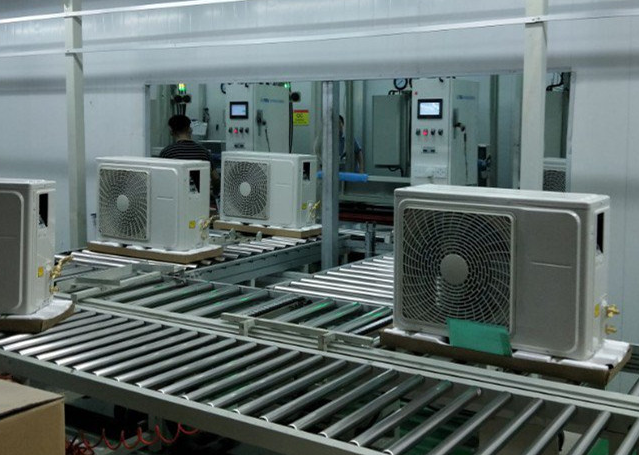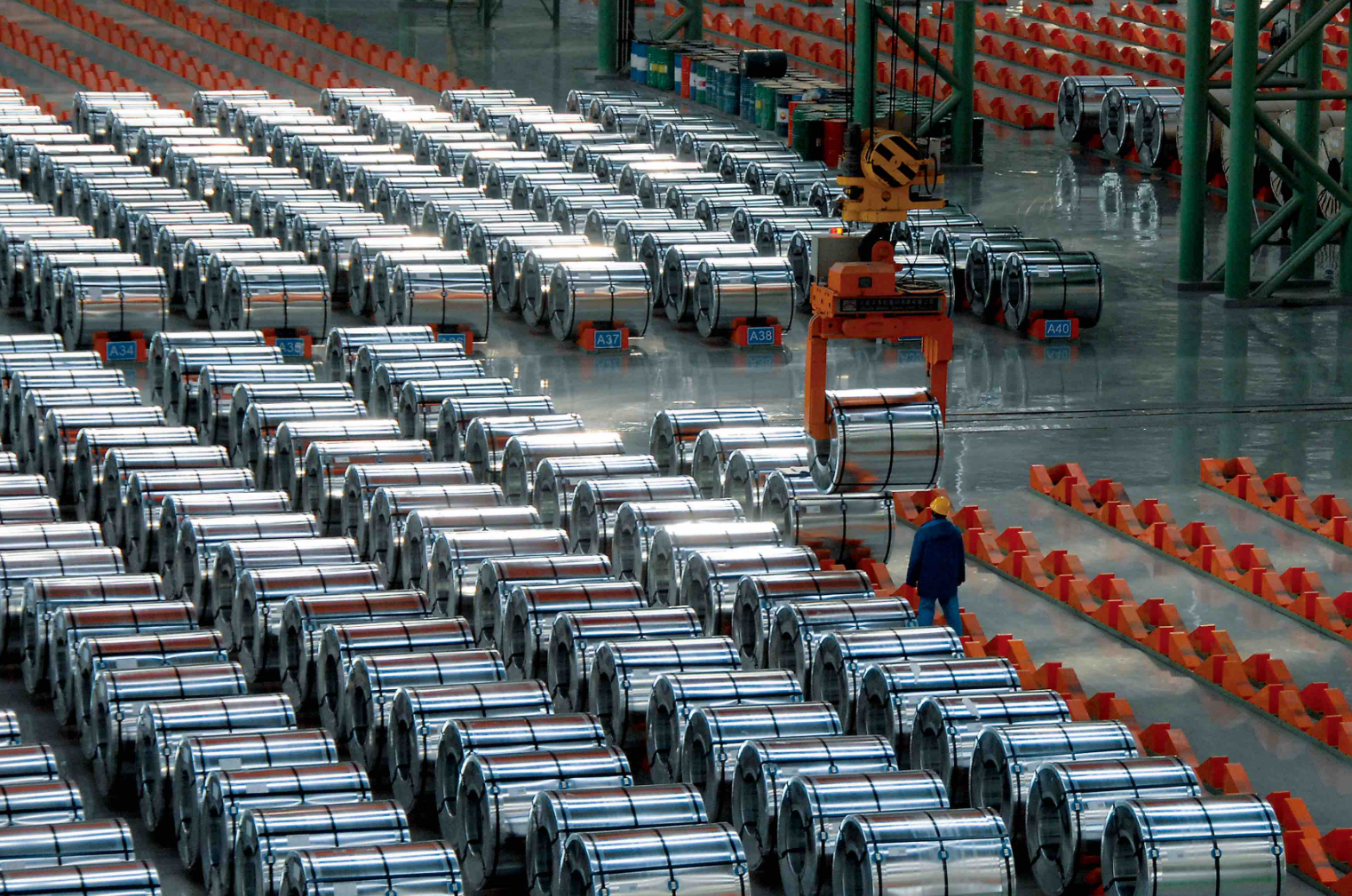
- English
- Español
- Português
- русский
- Français
- 日本語
- Deutsch
- tiếng Việt
- Italiano
- Nederlands
- ภาษาไทย
- Polski
- 한국어
- Svenska
- magyar
- Malay
- বাংলা ভাষার
- Dansk
- Suomi
- हिन्दी
- Pilipino
- Türkçe
- Gaeilge
- العربية
- Indonesia
- Norsk
- تمل
- český
- ελληνικά
- український
- Javanese
- فارسی
- தமிழ்
- తెలుగు
- नेपाली
- Burmese
- български
- ລາວ
- Latine
- Қазақша
- Euskal
- Azərbaycan
- Slovenský jazyk
- Македонски
- Lietuvos
- Eesti Keel
- Română
- Slovenski
- मराठी
- Srpski језик
The charm of hemming technology: the secret weapon to improve product quality
2024-09-14
1. Overview of Curling Process
Curling is a process commonly used in metal processing, mainly used to curl the edges of metal materials. By curling the edges of metal sheets, not only the structural strength and stability of the product are improved, but also the appearance and safety of the product are improved. Curling technology is widely used in various metal products, including air conditioner shells, oven door frames, etc., to meet different design and functional requirements.
2. Application of Curling Technology in Air Conditioner Shells and Oven Door Frames
Air Conditioner Shell
In the manufacture of air conditioner shells, the curling process is mainly used for edge processing to ensure the stability and safety of the shell. The edge after curling can not only avoid sharp corners from causing harm to users, but also enhance the overall rigidity of the shell and reduce deformation caused by vibration or impact during work.
Precautions during processing:
Material selection: It is necessary to select metal materials suitable for curling, such as cold-rolled steel plates or aluminum alloys, which have good plasticity and deformation resistance.
Temperature control: During the curling process, it is very important to control the temperature of the metal material. The temperature range is usually between 20℃ and 100℃. Too high or too low temperature will affect the effect of curling.
Curling depth: According to the design requirements, the depth of the curling is reasonably adjusted. Usually, the curling depth of the air conditioner shell is between 2 and 4 mm. This makes the shell more resilient when it is subjected to external impact and effectively prevents the shell from deforming to ensure that the dual requirements of strength and appearance are met.
Curling radius: To ensure structural strength, the curling radius is generally between 5 and 10 mm. Through proper radius processing, the bearing capacity of the shell can be improved to prevent cracks or deformation caused by stress concentration.
Material thickness: The thickness of commonly used air conditioner shell materials is between 0.6 and 1.0 mm. The curling process can significantly improve the edge strength under this thickness and enhance the stability of the overall structure.
Precision control: Accurately control the radius and angle of the curling to ensure the assembly accuracy and appearance quality of the shell.
Equipment selection: Select a high-precision curling machine to ensure stability and consistency during the curling process.


Oven door frame
In the manufacture of oven door frames, the main purpose of the hemming process is to improve the strength and rigidity of the door frame, while achieving seamless docking and ensuring the sealing performance and structural stability of the door frame. After the hemming process, the edge of the door frame will be smoother, reducing the impact on the sealing of the door frame.
Precautions during processing:
Edge smoothness: The edge needs to be polished after hemming to ensure smoothness and avoid negative impact on the sealing of the door frame.
Angle and curvature: The hemming angle and curvature need to be strictly controlled to ensure the precise fit of the door frame and good sealing effect. The hemming angle of the oven door frame is generally 90 degrees to 135 degrees. The appropriate angle can effectively improve the strength of the door frame and prevent poor sealing due to deformation of the door frame.
Edge thickness: After hemming, the thickness of the door frame edge usually increases by 1 to 2 mm. This increase can significantly improve the rigidity of the door frame and ensure that it is not easy to deform in a high temperature environment.
Stress distribution: During the hemming process, it is necessary to ensure uniform stress distribution to avoid deformation of the door frame caused by local stress concentration. Through calculation and optimization design, stress concentration can usually be controlled within 10%, thereby improving the durability of the door frame.
Connection process: The joints after curling need to be properly handled to avoid cracking or deformation.
3. Extended application of curling process
In addition to air conditioner housings and oven door frames, curling technology has also been widely used in many other products. The following are some typical application areas:
Automobile manufacturing:
In automobile manufacturing, curling technology is used for the processing of interior and exterior trims of the car body, such as door frames and hood edges. Through curling treatment, the rigidity of the car body can be enhanced, the safety performance can be improved, and the appearance quality can be improved.
Home appliances:
The edge of the outer shell of home appliances such as refrigerators and washing machines also adopts the curling process. Curling treatment not only improves the beauty and safety of the product, but also enhances the strength and stability of the overall structure.
Metal furniture:
In the manufacture of metal furniture, curling technology is often used for parts such as table legs and chair edges. This treatment method can improve the durability of furniture, avoid metal edges from causing harm to users, and enhance the visual effect of furniture.
Building materials:
The hemming process is also widely used in the processing of building materials, such as the edge treatment of metal wall panels and roof panels. This treatment not only enhances the structural strength of the material, but also improves weather resistance and extends the service life.
4.finally
Through the reasonable application of the hemming process, the structural strength, aesthetics and safety of the product can be improved. The application areas of the hemming process cover automobiles, home appliances, furniture, building materials and other aspects. Understanding and mastering the key technical requirements of the hemming process is of great significance to improving product quality and production efficiency.



